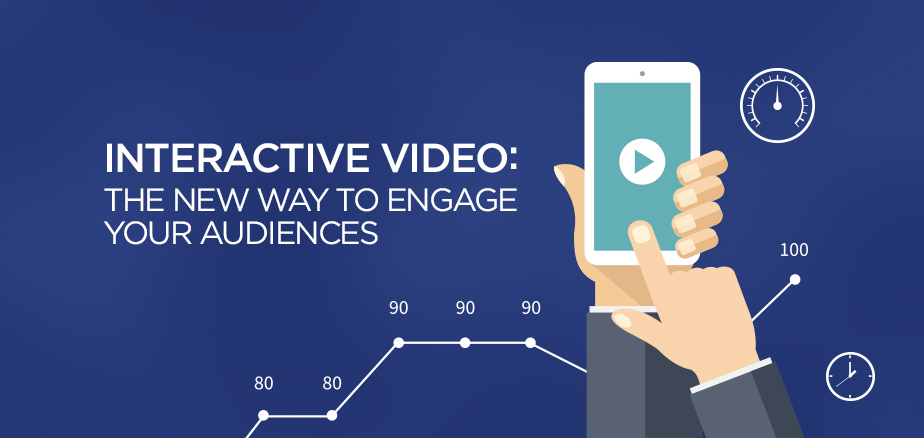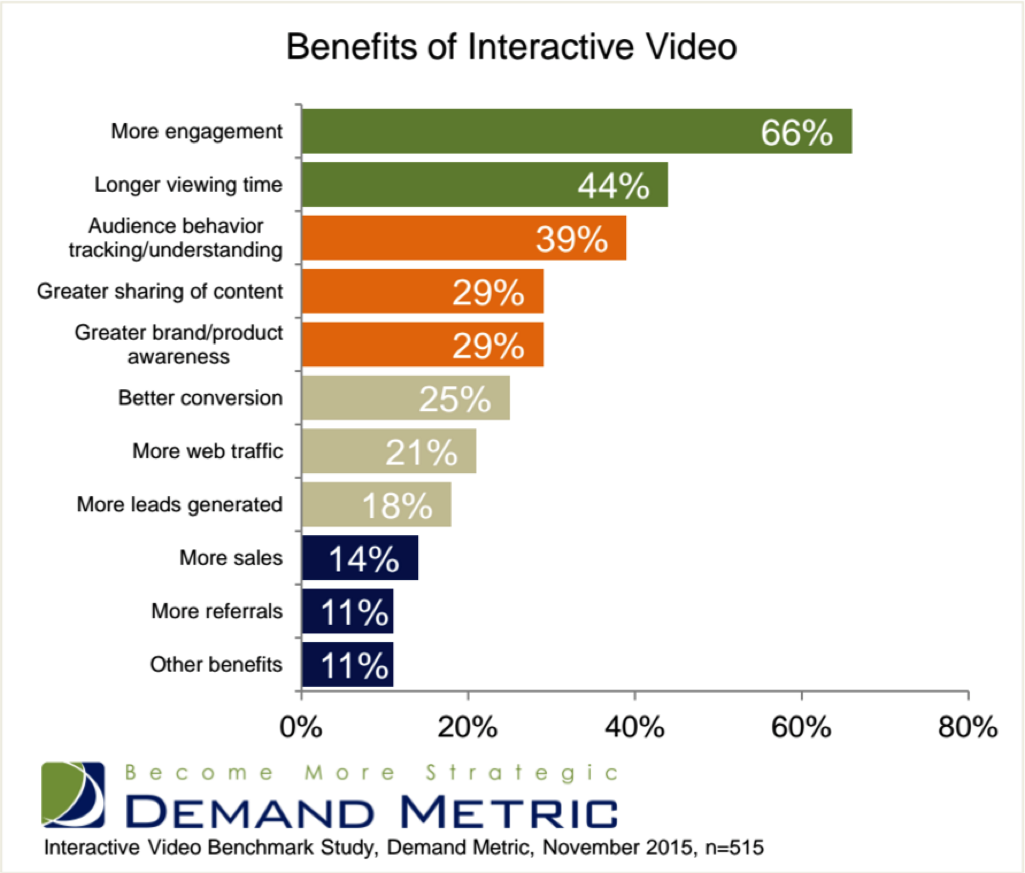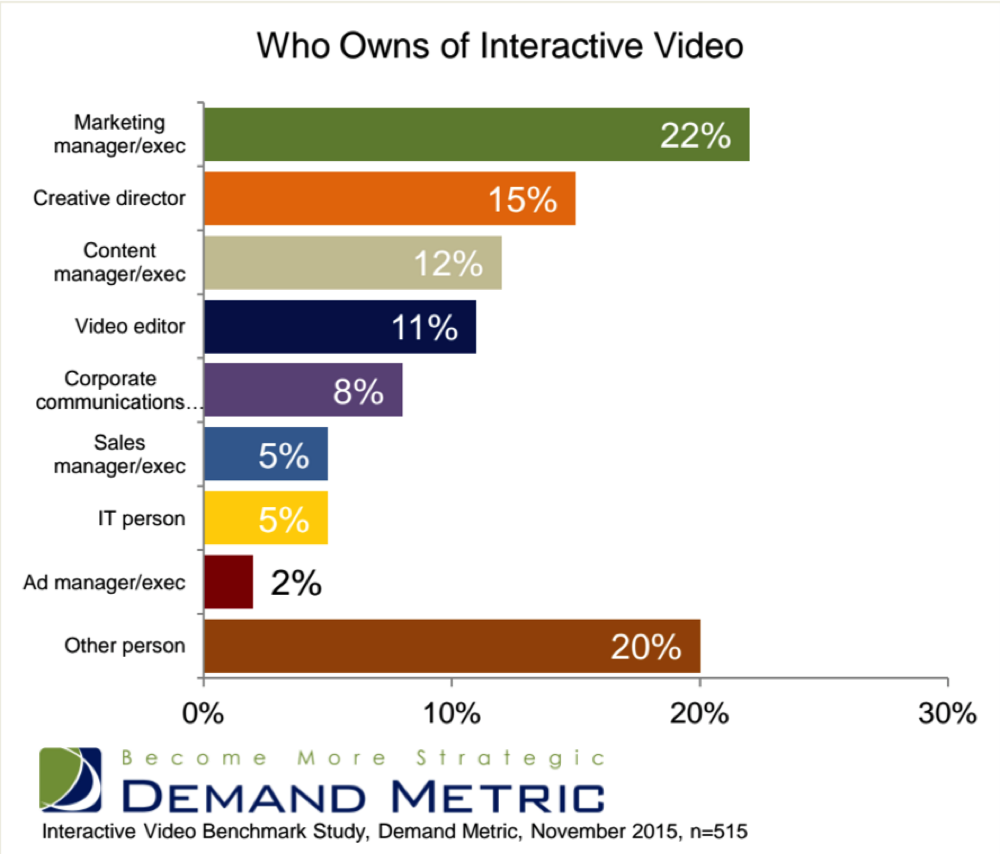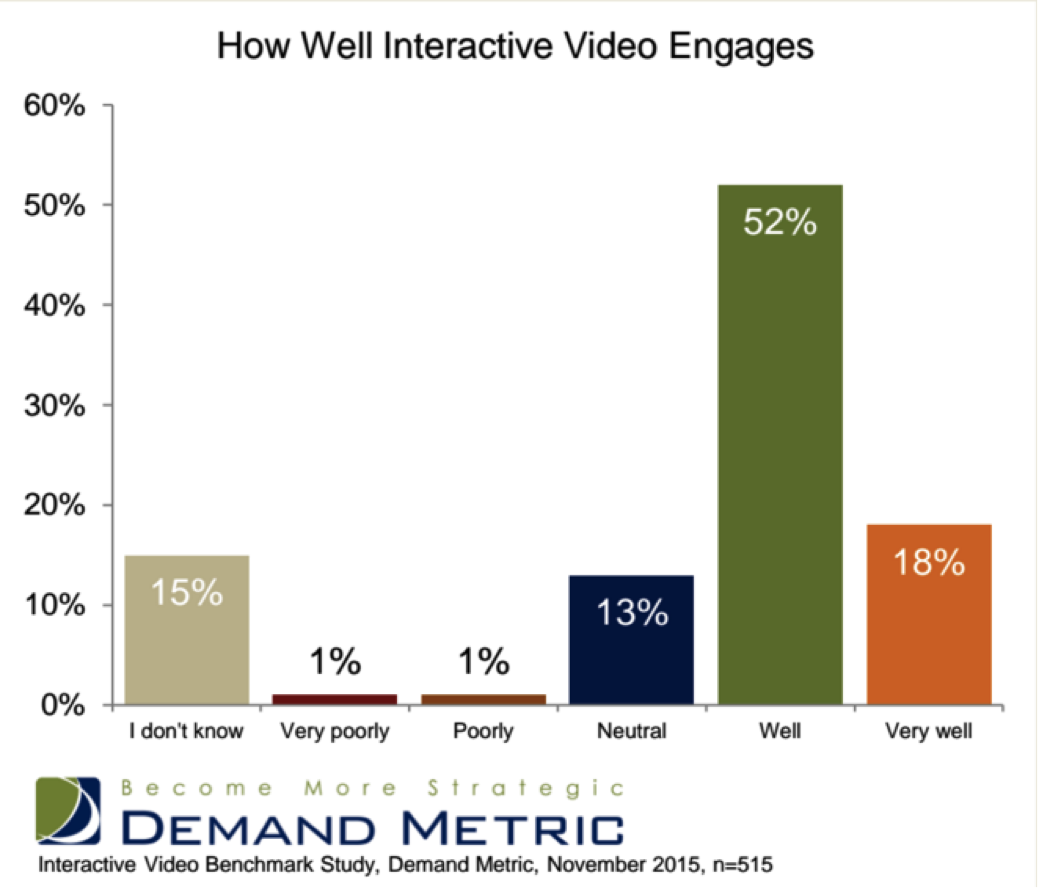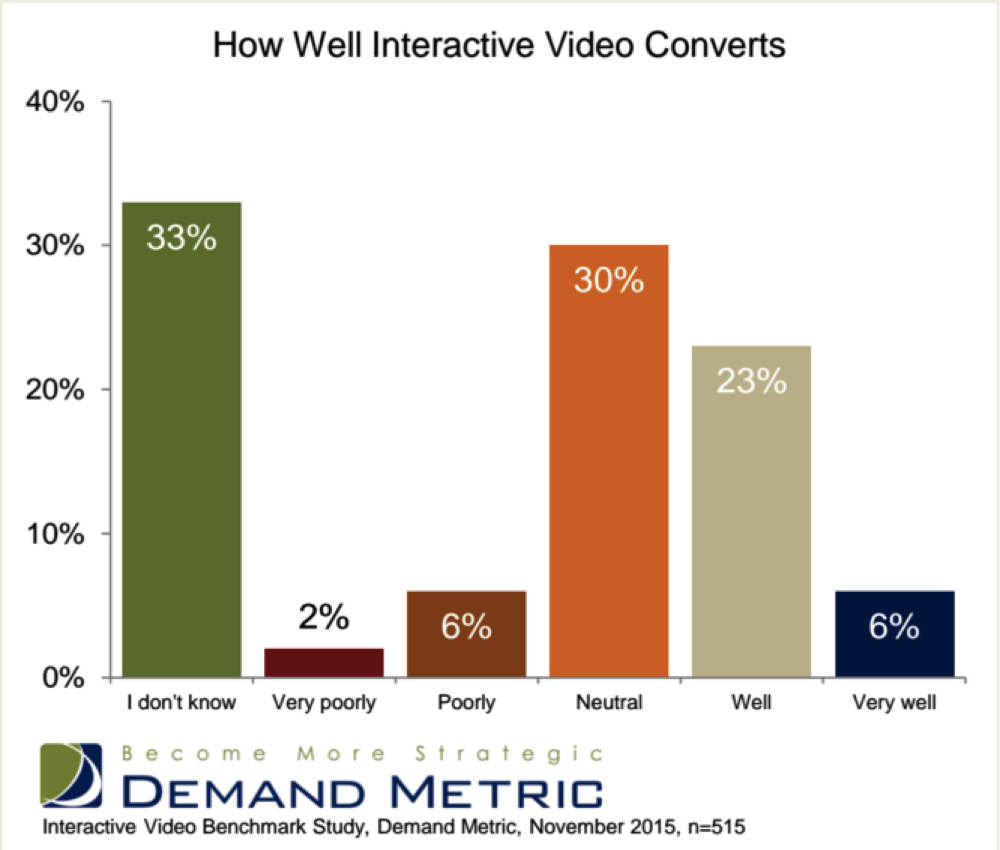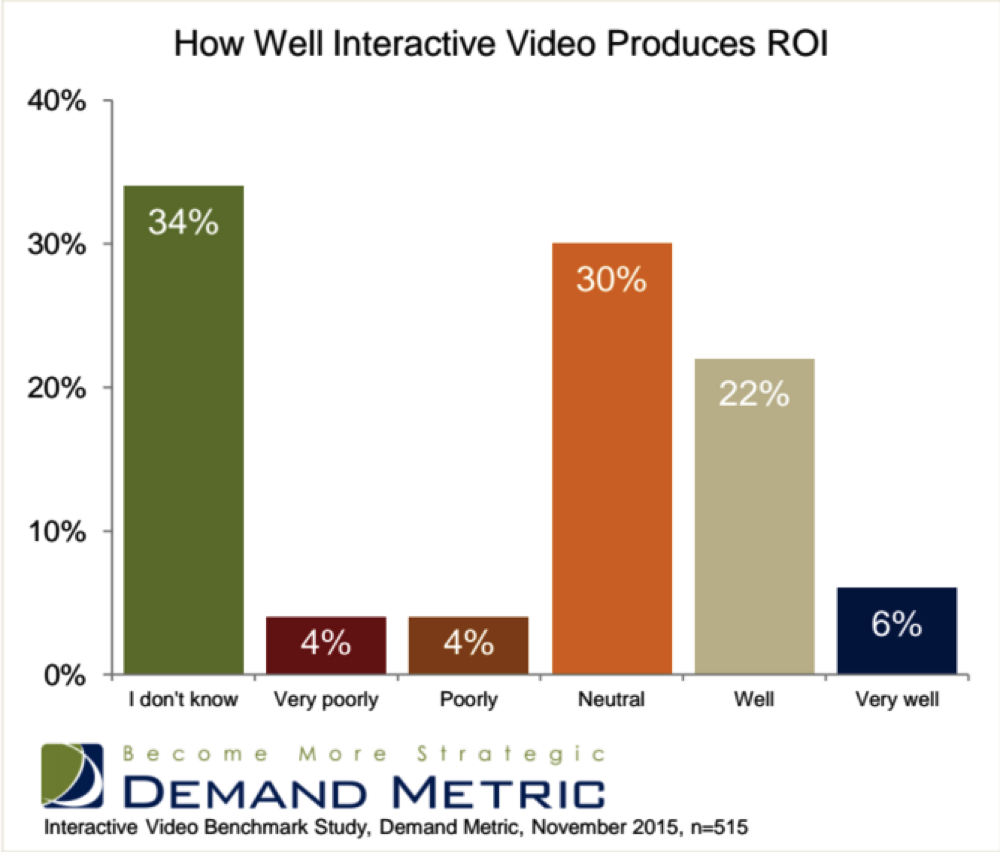ENGAGING AUDIENCES WITH INTERACTIVE VIDEO: REPORT SUMMARY
bsp-admin-1 on April 21, 2016
Communication habits are changing. We want bite-sized, to-the-point content, preferably on-demand. As a result, knowing your audience, appropriate timing, and on-point messaging has never been more important.
To engage short attention spans, marketers are using videos with a compelling twist. They’re adding interactivity, marketing automation, and personalization to build out a more advanced feedback loop, creating robust conversations with prospects and customers.
Demand Metric and Brightcove, in cooperation with our interactive partners, surveyed interactive video users about how they currently employ interactivity in videos. For marketers looking to get started, or expand their interactive video offerings, use these benchmarks guide you.
You’ll learn the following things about interactive video:
- Use cases
- Marketing results
- Ownership and responsibilities
- Budgets
Which Types of Interactive Video Should You Create?
Which types of interactive content are marketers using? Turns out, all of it. Once the barrier to entry is removed, more and more interactive video is produced. But as with any piece of content, have an objective. Depending which stage of the customer journey is being targeted, your purpose will differ. Need some inspiration? Check out the list below:
- Awareness video. Q&A with an industry leader, providing in-video question selection allowing viewers to create their own content path.
- Engagement video. Post event wrap-up with an in-video satisfaction survey to attendees.
- Conversion video. Product demo with chapters and in-video lead form.
- Retention video. How-to/tutorial with hotspots for deeper dive information.
- Advocacy video. User-generated content promoted on social with annotations linked to relevant content.
Do Marketers Who Use Interactive Video Drive Better Engagement?
Engagement means going beyond just a video view. True engagement means forming a connection and, in digital marketing, this must solicit a trackable action. Video is well suited to telling stories that garner a reaction, and interactive video compels these exchanges, putting the viewer in control. In fact, interactive video users receive a 66% uptick in video interest while 28% of those surveyed consider interactive video technology a competitive differentiator. Interactive videos drive measurable actions, so what are some of the other positive effects you can expect for your brand?
Who Should Oversee Interactive Video Content within Your Organization?
Ownership is important. You now know which types of interactive video to create and the performance indicators to monitor. But who will determine interactive content strategy and drive projects forward? According to the Demand Metric report, this responsibility currently lies heavily with marketing execs, creative directors, content managers, and video editors.
Keep interactive video ownership within one team, but don’t hesitate to pull in the expertise of others. Could sales and support teams lend a hand to inform the subject matter of this content? Align goals across your organization and create video content that drives these objectives.
Will I See Results with Interactive Video?
Often when testing the waters of a new technology or marketing tool, investments can be small as adopters wait to see a return on their investment, or indications of promising growth.
Interactive video users measure engagement at every point of interaction. How to assess where interactive video aids in conversion or calculating total return on investment, however, seems to be a bit of a gray area. The average planned spending on interactive video over the next 12 months falls within a range from $30,000-$39,000 for our survey respondents. Interestingly enough, of those using interactive video, 33% don’t know how interactive video converts, and an additional 34% doesn’t know the ROI. This suggests that there is a measurement gap. Close the loop on interactive video by integrating a marketing automation platform with your online video platform. Aligning your marketing automation platform, interactivity, and CRM tool is vital for measuring the effectiveness of interactive video.
What is the Future Importance of Interactive Video in Marketing Strategy?
Bite-sized and on-demand? Absolutely. Interactive video delivers. Marketers get it, as 70% of the video produced by study participants is interactive video. They understand that interactive video delivers unique, customized experiences. Furthermore, the additional insights that interactive video provides enable highly personalized campaigns. You can now double down on successful video content, repurposing in a way that delivers the kind of insights marketers dream about.

